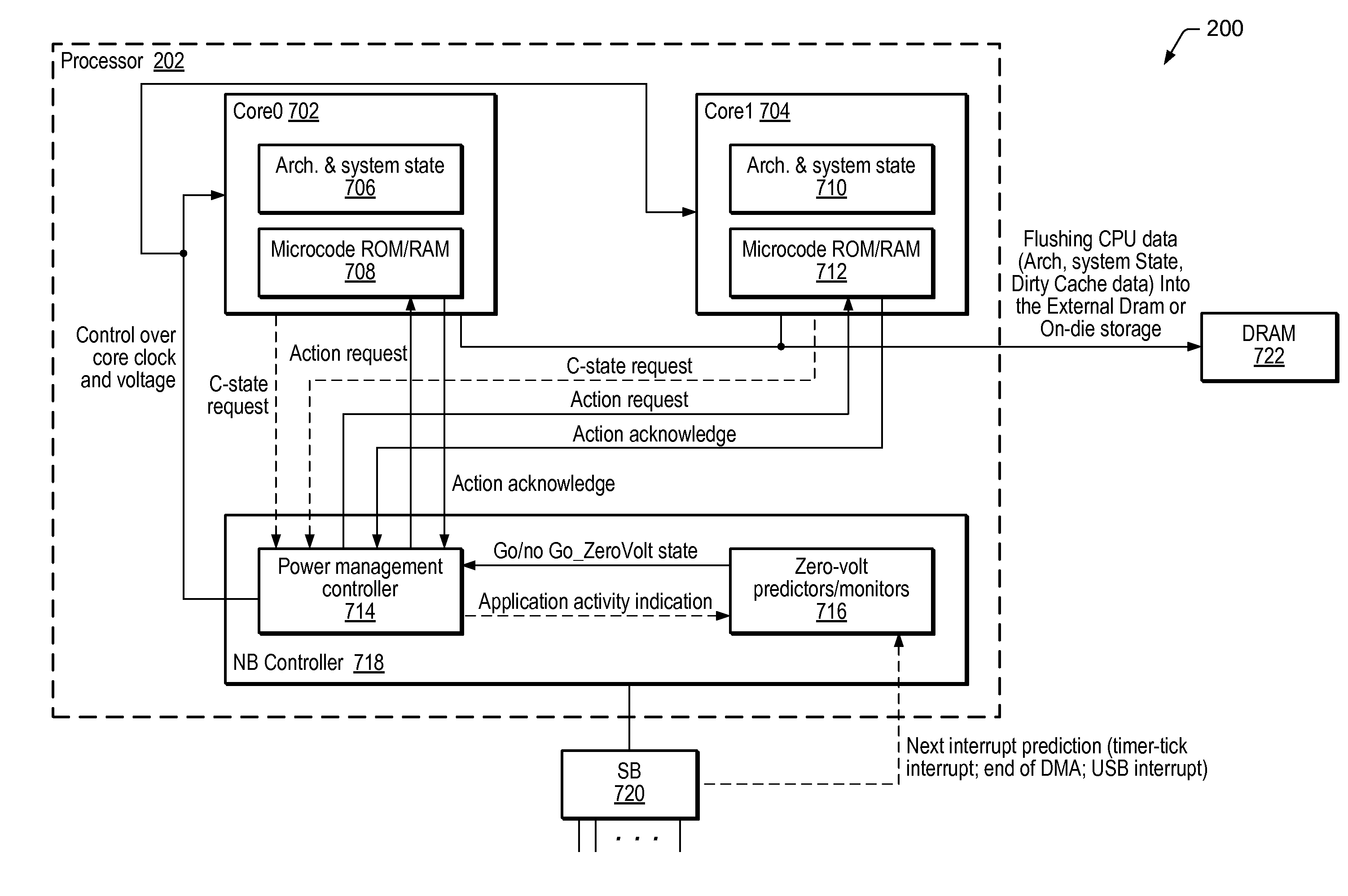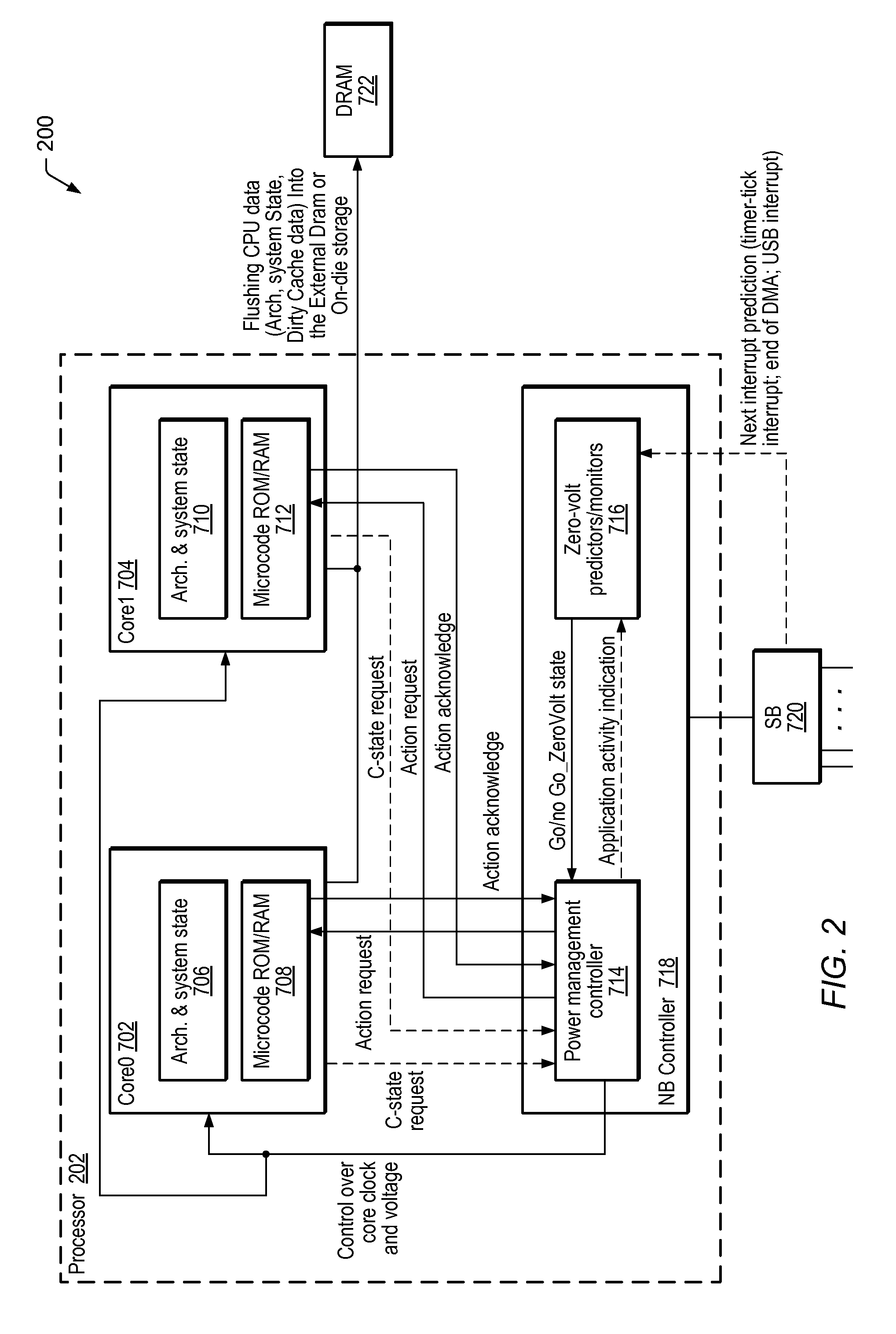Protocol for Transitioning In and Out of Zero-Power State
a zero-power state and transition protocol technology, applied in the field of computer design, can solve the problems of invalidating, reducing the efficiency of c1-c5 states for power saving, and completely eliminating the static power component consumed by the processor
- Summary
- Abstract
- Description
- Claims
- Application Information
AI Technical Summary
Benefits of technology
Problems solved by technology
Method used
Image
Examples
Embodiment Construction
[0024]A zero-power or zero-volt (0V) state, otherwise referred to as C6-state may allow for complete elimination of both dynamic and static components of power consumption, by transitioning a processor core (or multiple processor cores) to a state in which the respective supply voltage of the processor core may be reduced to 0V, and the operating clock used by the processor core may be uncoupled from the processor core, or gated off from the processor core, meaning simply that the clock signal may be prevented from reaching the processor core. Alternately, the operating clock used by the processor may be completely turned off, e.g. when no other system components depend on the same clock. C6-state is not equivalent to system sleep, e.g. state S3 where most of the system is powered down, and restoration to the operating state (C0-state) may require an extended period of time, oftentimes many seconds. C6-state may be applied to a single-core processor or to any core or group of cores ...
PUM
 Login to View More
Login to View More Abstract
Description
Claims
Application Information
 Login to View More
Login to View More - R&D
- Intellectual Property
- Life Sciences
- Materials
- Tech Scout
- Unparalleled Data Quality
- Higher Quality Content
- 60% Fewer Hallucinations
Browse by: Latest US Patents, China's latest patents, Technical Efficacy Thesaurus, Application Domain, Technology Topic, Popular Technical Reports.
© 2025 PatSnap. All rights reserved.Legal|Privacy policy|Modern Slavery Act Transparency Statement|Sitemap|About US| Contact US: help@patsnap.com



